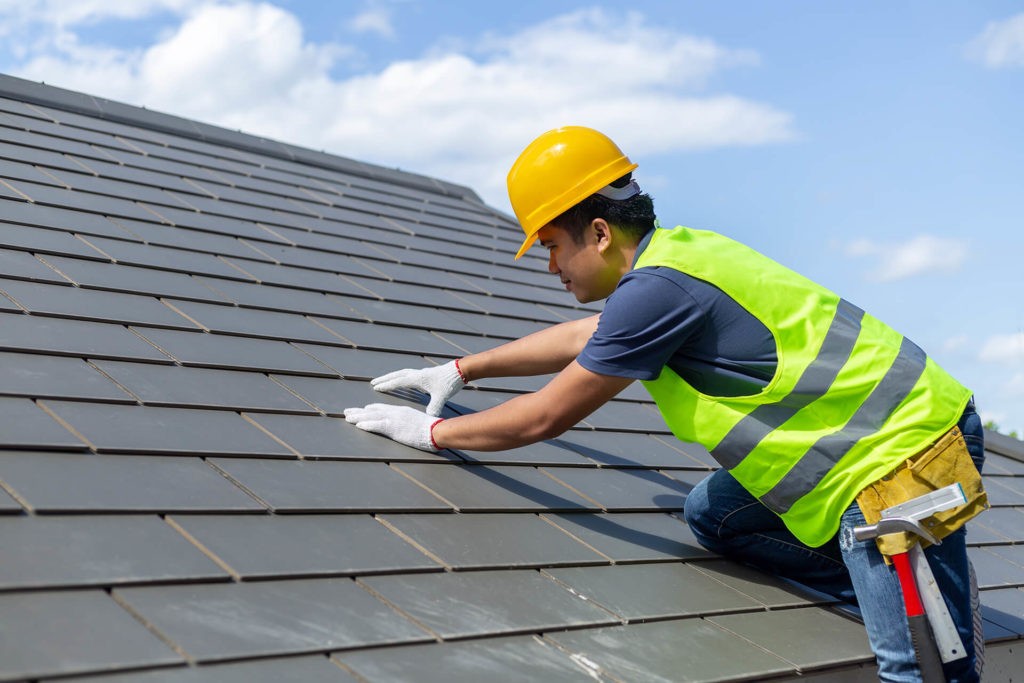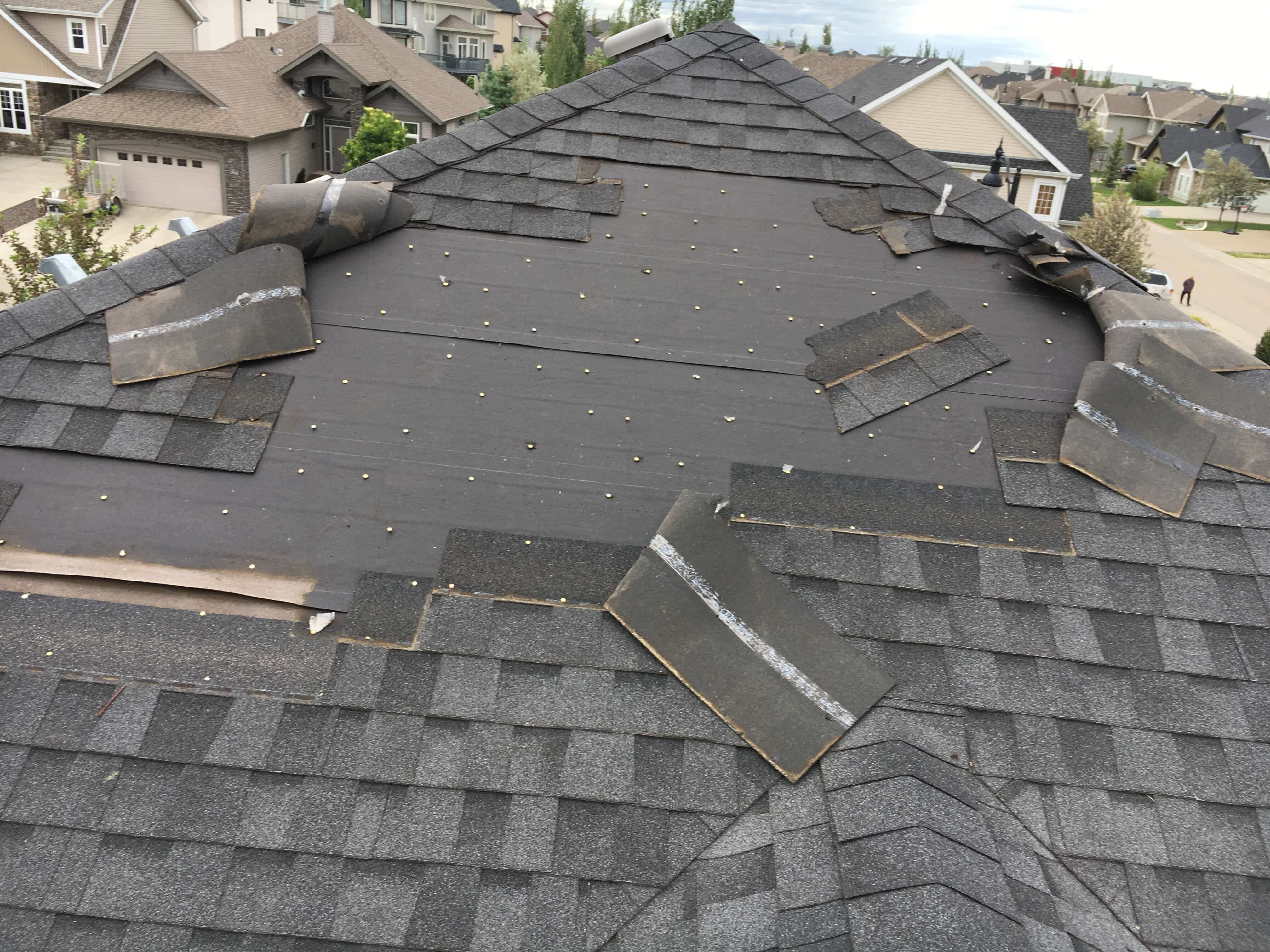Austin Roofing Repair Introduced: Debunking the Refine with Specialist Insights
Wiki Article
Roofing System Repair Guide: Step-by-Step Solutions for Leaks, Damage, and Wear
Have you ever asked yourself if you could take on roofing system repair services on your own? In the "Roofing Fixing Guide: Step-by-Step Solutions for Leaks, Damage, and Use," we will certainly expose the theory that fixing your roof is a challenging and costly job. Get ready to become your very own roof covering repair specialist!Assessing the Roofing System Damages
Beginning by aesthetically examining your roofing system from the ground, looking for any apparent signs of damages such as missing out on or loose tiles, broken blinking, or drooping areas. In addition, examine the seamless gutters and downspouts for any debris or obstructions that might be triggering water to back up and harm your roofing. Bear in mind, it's crucial to attend to roofing damage quickly to stop more issues and safeguard the integrity of your home.Finding and Fixing Leakages
Are you having a hard time to find and repair leaks in your roofing system? Situating and fixing leaks in your roofing can be a challenging task, but with the best approach, you can effectively attend to the problem. By following these steps, you can locate and repair leakages in your roof, making sure the protection of your home.Repairing Damaged Shingles

Begin by removing the damaged shingle. Carefully raise the sides of the bordering roof shingles and utilize a crowbar to loosen the nails holding the damaged shingle in position. As soon as the nails are eliminated, move the damaged tile out of under the surrounding shingles.
Following, prepare the area for the new tile. Tidy off any type of particles or staying nails and make sure the surface is level and smooth. Apply roofing concrete to the area, utilizing a putty blade to spread it equally.
Now, it's time to install the new tile. Move it right into place, straightening it with the surrounding tiles. Protect it with roofing nails, seeing to it to drive them into the assigned nail line on the shingle.
Last but not least, seal the sides of the roof shingles with roof covering cement to give additional defense against leakages. Smooth out the concrete with the putty knife and enable it to dry.
Dealing With Tear and put on
To properly attend to wear and tear on your roof covering, begin by on a regular basis examining for indicators of degeneration. Over time, your roofing can experience basic wear and tear brought on by exposure to the components. By conducting routine evaluations, you can identify any locations that might need attention prior to they transform into larger troubles.During your inspections, look for indications of broken or missing tiles, along with areas where the granules have actually deteriorated - austin roofing repair. These can show that your roof is nearing the end of its life expectancy and might require to be changed. In addition, check for any drooping or irregular locations, as this could be a sign of underlying structural issues
Along with visual examinations, take notice of any kind of adjustments in your roof's efficiency. If you see a rise in leakages or water discolorations on your ceilings, it can be an indicator that your roof covering is no much longer effectively staying out moisture. Addressing these issues without delay can aid avoid further damages to your home.

Upkeep Tips for a Healthy And Balanced Roof
For a healthy roofing system, regularly carry out maintenance jobs such as cleansing seamless gutters and eliminating particles. These basic activities can make a huge difference in the life expectancy and overall problem of your roof covering. When seamless gutters are obstructed with fallen leaves and various other debris, water can back up and seep under the shingles, causing damages to the roof covering framework. By cleansing your rain gutters a minimum of two times a year, you can avoid this issue. Additionally, removing debris from your roof, such as fallen leaves, branches, and dirt, is crucial. This debris can catch dampness and develop a reproduction ground for mold and mildew and mold, which can deteriorate the roof covering and lead to leaks. Routinely checking your roofing system for indicators of damage, such as split or missing roof shingles, is likewise important (residential roof repair). Attending to these issues promptly can avoid further damages and expensive repairs down the line. Ultimately, trimming overhanging tree branches can help protect against damage from dropping limbs and lower the danger of moss and algae development on your roofing. By complying with these maintenance suggestions, you can guarantee a long-lasting and healthy roofing for years ahead.Conclusion

In the "Roofing Repair Work Overview: Step-by-Step Solutions for Leaks, Damage, and Use," we will certainly unmask the theory that fixing your roof is a complex and pricey job. Start by aesthetically analyzing your roof from the ground, looking for any type of noticeable signs of damages such as missing out on or loose roof shingles, fractured flashing, or drooping locations. When gutters are blocked with fallen leaves and other particles, water can back up and seep under the tiles, causing damage to the roof covering structure. roofing repair contractor. Frequently examining your roof covering for signs of damages, such as fractured or missing tiles, is additionally important.In verdict, by following this detailed guide, you can effectively analyze and repair roof covering damage, find and deal with leakages, address damaged roof shingles, and take care of wear and tear
Report this wiki page